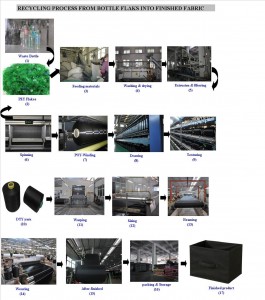 As an avid runner with an equal love for team sports, I frequently draw parallels between business and athletics. These comparisons are made often in business because of their validity. Very few businesses take off like a rocket. For most, the race is not a sprint but an endurance race. Setting vision, developing a plan, and having the determination to march toward that goal requires a marathon mentality. As an American textile company that has been in business for more than 40 years we know this to be true. On the trail and in the office, I have learned the following through victory and adversity.
As an avid runner with an equal love for team sports, I frequently draw parallels between business and athletics. These comparisons are made often in business because of their validity. Very few businesses take off like a rocket. For most, the race is not a sprint but an endurance race. Setting vision, developing a plan, and having the determination to march toward that goal requires a marathon mentality. As an American textile company that has been in business for more than 40 years we know this to be true. On the trail and in the office, I have learned the following through victory and adversity.
Be Committed. Signing up for the race is the first step. It is also the action that unleashes your potential. A commitment to compete, to set a goal, to develop a new product, or to pursue a new strategy is followed by a sense of obligation and urgency. A company, like a runner, must be committed to where it is going.
It’s a Process. I have run races on a whim, and have run races with preparation that followed a training program. Can you guess which led to the best result? To be your best as an individual or as a company, you must have a plan. Getting fit doesn’t happen overnight, neither does implementing a new strategy. There will be set backs and it will take time. But having a plan will lead to positive change (some that you perhaps did not envision). Schedules will change, bad habits will be exposed and eliminated, you will improve systems, and become more efficient.
Embrace the Challenge. Most people avoid suffering. But in deciding to train for and run an endurance race you know suffering in some form will be in your future. The best teams, the best athletes, and the best employees accept suffering as a necessary ingredient in achieving their goals. Staying late to finish a project, arriving early to prepare for a meeting — at times you will be inconvenienced or spend weeks doing things you don’t enjoy. Embrace the process and compete — you and your team will benefit.
It Feels Good. Having a healthy body and clear mind feels good. Crossing the finish line and knowing you succeeded feels great. Those feelings result from commitment, planning and embracing challenge. The endurance mentality will do the same for an individual, team, or company. You will have direction, you will improve processes, and you will overcome challenges. The end result will be a healthy, fit, successful company. It will feel good. Bayard Collins, HBD’s Vice President


